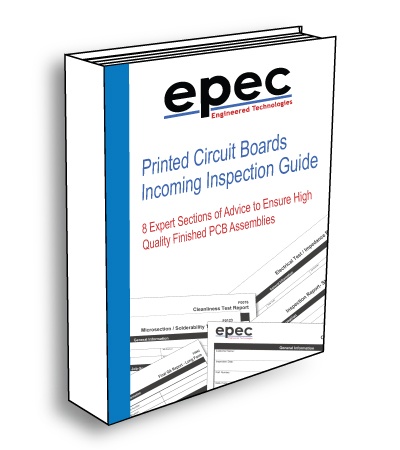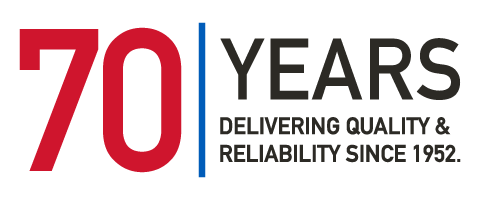RoHS FAQ
- What material issues should I consider when designing for RoHS?
- How does Epec insure the correct material was used to build the RoHS compliant part?
- Are there any considerations that I should be aware of during the PCB layout phase of the design?
- What are the advantages and concerns with different RoHS compliant finishes?
- What specification changes should I consider for RoHS compliant PCBs?
- Are there any additional procedures we should implement after receiving boards?
- What assembly advice can you provide to reduce the chance of delamination in RoHS compliant boards?
- What additional information can you give us regarding RoHS compliant boards?
Q: What material issues should I consider when designing for RoHS?
A: Typical RoHS assembly cycles run 30 C to 40 C degrees higher then traditional assembly processes. Because of this you will want to specify a material with a glass transition temperature (Tg) of 170 C degrees minimum. To avoid failures caused by Conductive Anodic Filaments (CAF) forming on internal layers, you may also specify that the material be CAF-resistant. For via and PTH reliability check the CTE (Z-axis expansion) rating for the material in choice. Epec Engineering and PCB laminate suppliers can prove to be a valuable source of information when specifying materials for RoHS compliant boards.
Q: How does Epec insure the correct material was used to build the RoHS compliant part?
A: Epec sends random samples each month to a third-party laboratory for testing to confirm the specified Tg of the material was supplied and used.
Q: Are there any considerations that I should be aware of during the PCB layout phase of the design?
A: Most traditional PCB design practices can transfer smoothly to RoHS compliant boards. Epec Engineering recommends to not “tent” or cover both sides of via holes to avoid “out gassing” during higher temperature assembly applications. To avoid “popcorning” on some flat mounted components such as BGA’s and PBGA’s, a more aggressive via rout fan-out pattern may be required. Additionally, some changes to solder paste stencil design may be incorporated to improve the pad wetting on RoHS compliant boards.
Q: What are the advantages and concerns with different RoHS compliant finishes?
A: Below are some of the advantages and concerns with the more popular RoHS compliant finishes.
Pb Free Hot Air Solder Level (HASL) Coatings
- Advantages: Pure metal alloy should work with most Pb-Free alloy choices. Pad wetting is faster and more uniform than other finishes. Another major advantage to Pb-free HASL finish is the use of high temperatures in the process act as an initial “Thermal Shock” test reveling issues such as delamination and out-gassing before the more costly assembly process.
- Concerns: Non uniform deposits, delamination or warpage due to higher processing temperatures. Possibility of chemicals entrainment in PCB.
Immersion Metal Finishes – (e.g. Tin, Silver)
- Advantages: Simple process, uniform height
- Concerns: Coating thinness and durability, Non uniformity. Possible formation of non-solderable alloys, and oxidation.
Electroless NiAu
- Advantages: Simple process, uniform finish, good shelf life, compatible with many alloys.
- Concerns: Possibility of “Black Pad” failure. More expensive then other finishes. Electrical test pins may damage pads.
Organic Solderability Proctectants (OSP)
- Advantages: Simple process, uniform finish, good solderability, lower cost.
- Concerns: Limited shelf life, durability in multiple solder cycle assemblies.
Q: What specification changes should I consider for RoHS compliant PCB’s?
A: Besides a higher Tg material as discussed above, we recommend the following:
- Specify desiccant be added to each package to control moisture.
- Ensure the proper surface finish criteria is specified. For example: typical assembly processes require only 20-30 micro inches of immersion tin plating. The higher temperatures used in RoHS assembly process may cause the Cu to leach through that thickness of tin plating causing contamination that prevents proper pad wetting. We recommend a requirement of 50-70 micro inches of tin to prevent this. Consult with your EMS provider or Epec Engineering to determine the best finish requirements for your assembly process.
- Make sure to document the RoHS requirements on your fabrication drawing.
Q: Are there any additional procedures we should implement after receiving boards?
A: It is best to leave the bare boards in the packaging supplied by the factory. Open only the packages required for incoming inspection to avoid moisture contamination that could lead to delamination. Below is Epec Engineering recommendation for shelf life of various RoHS compliant finishes:
- Lead free HASL: 9 Months
- ENIG: 9 Months
- Hard Gold: 9 Months
- Immersion Silver: 4 Months
- Immersion Tin: 4 Months
The boards may still be used after exceeding the shelf life, however Epec Engineering recommends an additional bake of the bare PCB’s to remove any excess moisture that may have penetrated the PCB’s during storage or transportation. We recommend a bake cycle of 130-150 degrees C for 2-3 hours. We also recommend the additional bake cycle if the boards were stored in a non-humidity/temperature controlled environment.
Q: What assembly advice can you provide to reduce the chance of delamination in RoHS compliant boards?
A: Epec Engineering has found that slower temperature ramp times and peak temperatures in the reflow profiles can help to reduce delamination issues. We recommend the ramp up temperature should be no more then 2.5 degrees C per second, and the peak temperature to be no more the 250 degrees C.
Q: What additional information can you give us regarding RoHS compliant boards?
A: We advise our customers to be aware of the following additional facts when dealing with RoHS compliant PCB’s:
- Higher Tg material is harder and more brittle then standard FR4 material. Care must be taken when handling or re-working the PCB’s to avoid micro-cracks in the material which may allow moisture into the PCB causing de-lamination concerns later in the assembly process.
- Assembled boards may come back with cosmetic differences including darker solder mask or material caused by the higher temperatures used during assembly. These cosmetic differences should not affect the performance of the assembly.
Get Ahead with RoHS Compliance
Trust Epec's expert engineering for your PCB needs. Act now for reliable and eco-friendly solutions.
Request a Quote Request Design Support Request More Information



